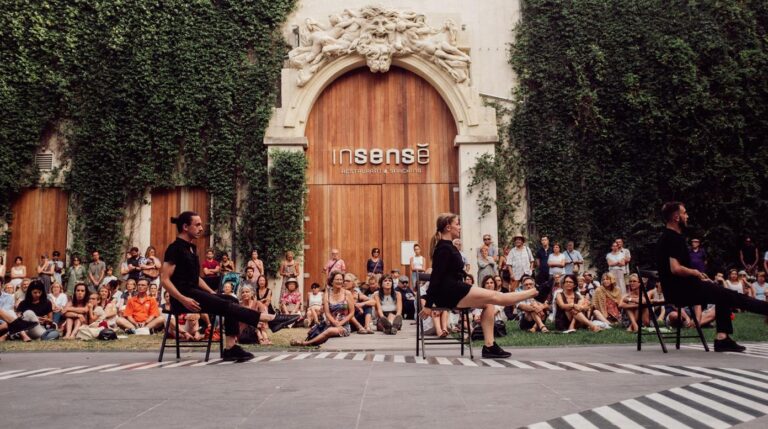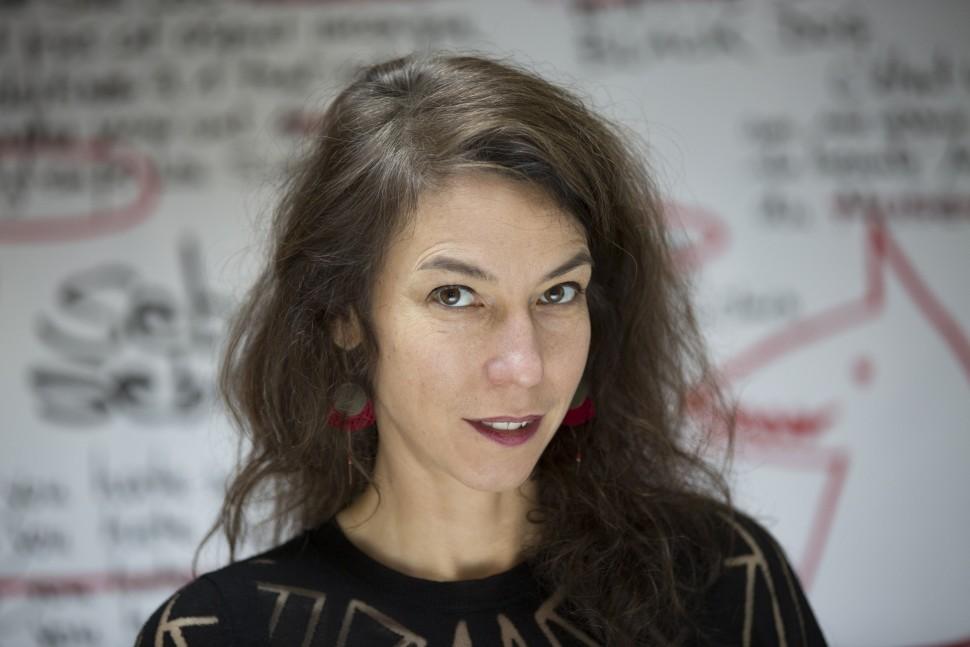
Portrait: Camille Trouvé
Performing Arts

VINCENT MUTEAU
Portrait: Camille Trouvé presents a famous “literary swindler” in R.A.G.E.
In Nov. 2015, R.A.G.E., the seventh show of the Compagnie Les Anges au plafond, premiered at Equinoxe in Châteauroux, France. For this piece, the second of a diptych focused on the theme of censorship, Camille Trouvé stages Brice Berthoud in a well-known 20th-century character. The story that unfolds is both swindling and authentic. After being performed on various national stages, R.A.G.E. will be presented by the Chicago International Puppet Theater Festival, with the support of a grant from FACE Contemporary Theater program.
Les Anges au Plafond: from mythic narratives to contemporary characters
On the website of Les Anges au plafond, their craft is described as focused “on the precise place where the intimate and the political intersect.” But how and why does this team of puppeteers want to approach this subject in the 21st century?
With their performances of Antigone de papier in 2007 and Au Fil d’Œdipe in 2009, both part of the series La Tragédie des Anges, the artists question the ancient myths of Antigone and Oedipus, and the myth’s relationship to the issues of freedom of expression. These artistic creations inspired Camille Trouvé and Brice Berthoud to reflect on these themes through contemporary characters. The Cycle de la Censure consists of Les Mains de Camille and R.A.G.E. which, respectively, feature Camille Claudel and a well-known 20th-century novelist whose initials form the title of the show—it’s up to you to find out who it is!. Through these two characters, the puppeteers narrate Camille Claudel’s fight against bourgeois censorship in the 19th century and the impact of 20th-century self-censorship with R.A.G.E. With these tragic and poetic narratives, Camille Trouvé and Brice Berthoud also reveal an important dynamic in society: the threat hanging over our freedom of expression. While the censorship of the 20th century may be more subtle than in the past, it is nonetheless a strong presence.
R.A.G.E.: a complex character in search of authenticity
R.A.G.E is the story of a famous novelist who takes refuge in France during World War I. The novelist, born in the Russian Empire at the beginning of the war, subsequently becomes the only person to win the Prix Goncourt twice—under two different names. It is also the story of a mother who wants her son to fulfill an extraordinary destiny as a writer and diplomat. In R.A.G.E, we see how maternal love shapes the novelist, and watch as he learns to multiply his identity and to travel between fiction and reality.
R.A.G.E. describes how this historical character avoided censorship by lying. In the story, the novelist invents and reincarnates himself, discovering the power of pseudonyms and creating new masterpieces with the hand of his alter ego. The novelist’s taste for lies, manipulation, and subterfuge is delicately staged by Camille Trouvé, who details the baffling paradox of lying in quest of truth.
“I was tired of being just myself … To begin again, to relive, to be another was the great temptation of my existence … The truth is that I was very deeply affected by man’s oldest temptation: that of multiplicity … I have always been another,” the novelist says in R.A.G.E.
This paradox, and the ambiguity between fiction and reality—between the visible and the invisible—are presented by director Camille Trouvé as a representation of the novelist’s desire to free himself from the stigma that limits his creativity. The liberating alter-ego that the writer adopts becomes his new “self” and—in the multiplicity of identities—he loses himself in his own game.
Scenography and staging: how far does the Illusion go?
Performers Brice Berthoud, Jonas Coutancier, Yvan Bernardet, Xavier Drouault, Piero Pépin, and Noëmi Waysfed bring fifteen paper puppets to life. While foley artist Xavier Drouault awakens our imaginations, trumpeter Piero Pépin carries the emotions of the play. Likewise, singer Héléna Maniakis recreates the writer’s universe. Overall, the puppeteers offer the audience a magical and dramatic experience. Manipulation and illusion are at the very essence of the show: the protagonist toys with lying and deception while Camille Trouvé and Brice Berthoud attempt to manipulate our gaze through scenography.
“On this show, we wanted a multitude of possible points of view … We said to ourselves: ‘The basis will be two audiences who are one, two characters who are also one, and we’re going to play with these points of view on the story.’ Depending on where you’re placed in the room or even on the stage, you won’t see the same show. Sometimes we hear one part of the audience laughing and not the other, and that’s very much the soul of R.A.G.E: Can we be wary of absolute truths?”Camille Trouvé said in a 2015 interview with Laura Lalande.
The relationship between the stage and the auditorium, lighting design, songs in different languages, texture of the text, and rich diversity of arts used in the performance all create a captivating atmosphere that brings us into the midst of an intimate reflection. The production immerses us in the life of the greatest literary swindler of the 20th century.
About Camille Trouvé
After training in puppetry in the Glasgow National School, Trouvé returned to France, where she met theatre directors including Wajdi Mouawad, François Cervantès, Catherine Germain, and Laurent Fréchuret. She also trained at the International Institute of Puppetry in Charleville-Mézières, France with the English troupe Green Ginger. As a builder of unusual articulated objects and puppeteer, Camille Trouvé continued her creative explorations. Throughout her various productions, she has created an original and offbeat visual world, often realized in collaboration with colleagues like Italian puppeteer Fabrizio Montechi. Additionally, she has performed as a puppeteer in Le Cri Quotidien, Une Antigone de papier, Les Mains de Camille, and Du Rêve que fut ma vie. She hasdirected Les Nuits polaires, Au Fil d’Œdipe, R.A.G.E, and White Dog.
About Les Anges au plafond
Les Anges au Plafond is a meeting of minds, founded in 2000 by actors and puppeteers Camille Trouvé and Brice Berthoud. The two developed their artistic language around three main axes: epic sweep, the space in question, and revealed versus concealed manipulation. Their shows explore the complex relationship between puppeteer and puppet. Camille Trouvé and Brice Berthoud transport us into the worlds of outstanding protagonists, seeking to tell life stories that are both intimate and spectacular. In doing so, they focus on the precise place where the intimate and the political intersect. As an example, their latest creation, Le Nécessaire Déséquilibre des Choses, explores the fragility, vulnerability, and emotional chaos of humans, while questioning the origin of the world. This time, les Anges au Plafond stands out step-by-step from mythological figures, taking human form and sparking a debate around the concept of desire and the meaning of life. Based on Roland Barthes’s 1997 Fragments d’un discours amoureux, the piece, full of poetry and philosophy, will premiere on Nov. 3, 2020, at the Maison de la Culture in Bourges.


